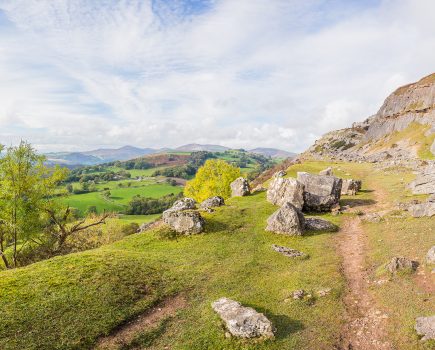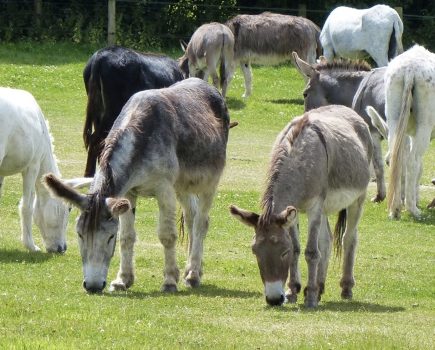James Strawbridge, co-presenter of the TV show It’s Not Easy Being Green, tells us more about his good life
James Strawbridge, co-presenter of the TV show It’s Not Easy Being Green, tells us more about his good lifeSustainable living is not the same as self sufficiency. Self sufficiency conjures images of ‘The Good Life’ and John Seymour’s established classic; it suggests growing everything you need and becoming a self supplying homestead. Yet, despite the famous song lyrics “I am a rock, I am an island”, I believe that there are serious flaws to the idea of living on a smallholding-island in a community and mainstream society. Plus, let’s face it, it can get a bit lonely! Sustainability, however, is often shrouded in a green mist of vague vocabulary and mistaken terms. I believe sustainability to imply more than simply providing what is necessary to survive; it is to aim at producing the food, energy, and lifestyle that sustains itself yet, still has a strong connection with the environment surrounding us. So, over the course of this article, I will be discussing some ways to tap into the circle of smallholding sustainably, from encouraging hedgehogs to dealing with slugs, making gorse wine to setting up a traditional small scale vineyard. ONE MAN WENT TO MOW A MEADOWThis month at New House Farm it was time to move the pigs again. Having had a patch of land enclosed by electric fence for a month or so, they have turned over the land and done their job as our fossil fuel-free rotavators. Part of this newly exposed and fertilised land has been sectioned off for our freshly chitted potatoes and some extra rows of carrots and leeks. The rest of the ground is now being sown as a small meadow. I believe that a crucial element in garden design and sustainable farming is grass – think of meadows filled with grasses and summer flowers like cornflowers, poppies and wild orchids. There is nothing lovelier than a flower-filled meadow of long grass, with a simple scythed path meandering through it. Obviously it is not just the poets wandering lonely like clouds and daffodils that get pleasure out of a meadow space; the natural wildlife gets the chance to flourish, and it’s a great opportunity to give something back to the environment that supplies so much for the rest of the year. But, beware – a meadow can be hard work! You can’t leave the flowers to re-seed every year (they will re-seed, of course, but not in the right place or in sufficient numbers). The only guaranteed way of achieving flower-filled meadows is to rotavate the ground annually and re-sow with flower seeds, or in our case let the pigs have a great time clearing it for you.
VINES FOR WINEThe other major project I have been working on this month is preparing a small-scale vineyard. Spring is a good time to plant vines as growth normally starts in late May. There has been some discussion about north/south versus east/west planting and, from the research I have done north/south is said to give the best ripening. But there are two other important factors to consider: firstly, the shape of the plot to be planted – rows may lend themselves more naturally to one direction or other and, secondly, the prevailing wind. Having the wind blow between the rows is said to produce more rapid drying, and that this is a major factor in disease prevention, high humidity being ideal for many diseases. We have a small south-facing bank which has been waiting to be put to good use. So, this year we decided to plant our very own mini-vineyard. We opted for the east/west rows because of our prevailing wind (the wind turbine is a pretty good weathervane for that sort of thing!), and the bank is steep enough so that there will be no shortage of sunlight.
GOOD YIELDSWe opted for one variety of white grape called Orion and a red grape called Rondo, both hybrids with good yields. We chose hybrids due to their resistance to fungal infections and enhanced their ‘immune system’ by planting half a dozen Mulberry trees within the rows. These supply a rare fruit which I am very eager to try, but they also help to protect vines from disease – a sort of companion planting I guess. Obviously, choosing to make wine is a long process which may not have drinkable results for sometime. But, it is the long term investment that will hopefully mean many years of happy hangovers to come! Plus, in terms of fun, there are not many things that beat drinking or eating your own produce. I will keep you up to date on the progress and maintenance of the vines, but I strongly recommend them – after all, most other countries seem to be successful wine manufacturers, so with a bit of climate change Britain may yet gain international acclaim for its mini vineyards.So, work with wildlife, use local flowers, and grow your own wine. It is all good fun and I hope you have found something interesting. Plenty more to come next month!
READ MORE ARTICLES FROM JAMES STRAWBRIDGE
SUBSCRIBE – to Country Smallholding magazineBOOKSHOP – Browse the latest books for smallholdersFORUMS – discuss smallholding issues







